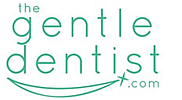Oral Cancer – Symptoms, Risks and Prevention
Each year, cancer of the mouth (oral cancer) develops in 30,000 people in the United States and causes 8,000 deaths, mostly in people older than 50.(That is almost 1 person per hour). It is the sixth most prevalent cancer found in the United States with a five year survival rate of only 50%. This death rate is higher than cervical or melanoma cancers, yet there is very little attention given to it by the media. Combinations of the lack of awareness, infrequent dental visits and/or lack of a system for early detection by the health care professional contribute to the relatively morbidity rate. When you visit your dentist or physician are they checking for this deadly disease?
Because early detection vastly improves the likelihood of cure, screening for oral cancer should be an integral part of medical and dental examinations. Cancerous growths less than ½ inch across (about 1¼ centimeters) usually can be cured. Unfortunately, most oral cancers are not diagnosed until they are larger and have spread to the lymph nodes under the jaw and in the neck. Because of delayed detection, 25% of oral cancers are fatal.
Oral Cancer Risk Factors
A hereditary factor, although not yet well understood, makes certain people more susceptible to developing oral cancer. The two greatest controllable risk factors for developing oral cancer are tobacco and alcohol use. Tobacco use—including smoking cigarettes (particularly more than 2 packs per day), cigars, or pipes; chewing tobacco; and dipping snuff—accounts for 80 to 90% of all oral cancers. Cigars and cigarettes are equally dangerous as risk factors in the development of oral cancer, followed in descending order by chewing tobacco and pipe smoking.
Chronic or heavy alcohol use (particularly more than 6 drinks per day) increases the risk of oral cancer. The combination of tobacco and alcohol is more likely to cause cancer than either one alone
Symptoms of Oral Cancer
Oral cancers are usually painless for a considerable length of time but eventually do cause pain. Pain usually starts when the cancer erodes into nearby nerves. When pain from cancer of the tongue or roof of the mouth begins, it usually occurs with swallowing, as with a sore throat.
The early growth of salivary gland tumors may or may not be painful. When these tumors do become painful, the pain may be worsened by food, which stimulates the secretion of saliva. Cancer of the jawbone often causes pain and a numb or pins-and-needles sensation (paresthesia), somewhat like the feeling of a dental anesthetic wearing off. Cancer of the lip or cheek may first become painful when the enlarged tissue is inadvertently bitten.
Preventing Oral Cancer
Diligent, routine examination of the mouth is the best strategy for finding cancerous and noncancerous growths. Avoiding excessive alcohol and tobacco use can greatly reduce the risk of most oral cancers. Smoothing rough edges from broken teeth or fillings is another preventive measure.
Because this is a topic rarely discussed I thought the information would be of value to the readership. Most of the above information comes from the Merek manual. As advised, make sure your dentist is checking your mouth for oral cancer and if they don’t ask them why not? If you have any question or concerns I would be happy to perform a complimentary cancer check for you.
Oral Cancer – Symptoms, Risks and Prevention
Please submit your questions to Dr. Antolak by: email- DrAntolak@TheGentleDentist.com, calling us at (586)247-3500, fax-(586)247-1211 or by writing us at 15055 22 Mile #2, Shelby Twp. MI 48315.
